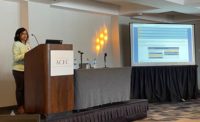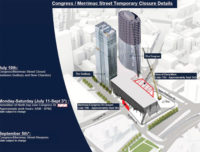As Boston unveiled a $2-billion overhaul of its aged and badly worn schools, a top business group is pushing for money also to be set aside for maintenance.
Pam Kocher, president of the Boston Municipal Research Bureau, called the renovation and construction plan announced by Mayor Michelle Wu on May 12, “very much needed and long overdue.”
But even as Boston pushes ahead with the effort to upgrade, repair and, in some cases, rebuild schools across the district, there remains a need to focus on keeping renovated and constructed schools in good repair, something that has been lacking throughout the years in the BPS system, Kocher says.
“A big part of the problem with the system is not keeping up with care for the buildings,” Kocher says. “They need to be maintained so we don’t get into the same dynamic.”
Green New Deal
Wu’s plan—dubbed a Green New Deal for Boston Public Schools—would initially focus on 14 schools in particularly bad shape. That includes the McKinley Schools in the South End and the Madison Park Vocational Technical School in Roxbury, as well as others in East Boston, Dorchester and West Roxbury.
The mayor says buildings badly in need of work or rebuilds include the Cleveland Building in Dorchester, the West Roxbury Education Complex, East Boston’s Otis School, Roxbury’s King School, East Boston’s PJ Kennedy School, the Blackstone Elementary School in the South End and White Stadium in Franklin Park.
It is unclear when construction would begin on the initial projects but Wu is talking broadly about completing overhauls of all of the city’s more than 120 schools within 10 years.
In a first step, the Wu administration has brought on board a pair of consultants. School officials will work with the Bureau Veritas Technical Assessments to “provide detailed analysis of our school buildings’ needs, and make recommendations for renovations and upgrades,” according to a press release put out by the mayor’s office.
The full study will take 18 to 24 months.
In addition, the city’s Public Facilities Dept. has hired the DLR Group to develop a “school design study” intended to “accelerate the programming and design phases of future projects” while enabling city officials to “take on school facilities upgrades at an unprecedented pace.” That study will take 12-18 months to complete, according to school officials.
Wu’s $2 billion plan is double the amount of a comparable program unveiled by her predecessor, former Mayor Marty Walsh, whose $1 billion BuildBPS program only made substantial progress on a few projects, including the $125-million Boston Arts Academy slated to open in the fall.
Wu’s immediate challenge will be finding the money to pay for her ambitious school repair and upgrade plan. Boston’s relatively new mayor has included more than $600 million for the overhaul plan in her proposed rolling capital budget for the year. The proposed budget requires City Council approval.
Boston will also be working with the state school building authority, which can provide some level of funding, with Wu also indicating the city will be looking at outside resources and funding to help foot the bill.
“This is a new, all hands-on deck approach, with new financial resources, planning tools, and staff capacity to deliver urgent improvements to our school buildings,” Wu said in a statement.
Wu also formed an interdepartmental team to oversee the new projects, which will be led by Dion Irish, the city’s chief of operations, and Indira Alvarez, the BPS operations chief. Wu’s proposed budget includes money for 25 staff positions, “including project managers, coordinators, and construction directors.”
The combination of the district's big drop in enrollment with some school facilities that may be too decrepit and costly to fix could lead to proposals to combine schools, an emotional and politically charged issue, Koch says.
“There is certainly a lot to do,” Koch adds. “It will take a substantial amount of time to just get through the process of doing a more thorough assessment of the facilities.”





